
暮らし人インタビューvol.1/小田 純子
なぜ水俣に来ようと思ったのですか?
Why did you decide to come to Minamata?
東京、江戸川区に住んでいました。私の母が、水俣病に関心があり機関紙「水俣」を購読していて、その中に水俣の相思社で1週間ほどの「実践学校」があるという話を母から聞き「修学旅行みたいで、おもしろそう。。」と、思い参加したのが1981年。私が高校3年の夏休みの時でした。水俣病の事。無人島でのキャンプ。いろいろな方々の水俣病のお話。食事は交替でみんなで作る。甘夏園、畑の草取り等がありました。
I lived in Edogawa, Tokyo. My mother was interested in Minamata disease and subscribed to the Minamata newsletter. I heard from my mother that there was a “practical school” for a week at Minamata’s Soshisha. It was like a school trip, so it looked interesting. I joined the school in 1981. It was during my summer vacation in my third year of high school. The programs were about Minamata disease, camping on an uninhabited island, hearing stories about Minamata disease from various people. Everyone cooked meals in turn. We weeded the fields of the summer sweet oranges.
1番強烈な思い出は、「やってみたい」と、自分から進んでやったはじめての「肥汲み」。肥汲みバケツに、長いひしゃくで汲んで入れてヨロヨロしながら肥溜めに入れる。。香りも強烈。。すごい緊張感!!。。同じ参加者の人と2人以上ででやった。。帰ってからこの事は、友人には言えませんでした。。この頃は「乙女」だったからなぁ。。でも、「乙女」だったらやってなかったよなぁ。。この、実践学校の最中に当時、相思社にいらした柳田耕一さんから、。。1年間の実践学校というか、生活学校をやってみたい。「水俣生活学校」を!!。。という話を聞き、私は「へえええ。。。長いなぁ。。」なんて思っていたのですが、その話が、だんだんと具体的になっていき募集人数20人。。というのを、母から聞き、東京では出来ないことがやれるという気持ちもあり、参加することを決めました。1982年3月に高校を卒業しその次の週に水俣へ行きました。
The most intense memory was carrying “night soil,” which I tried then for the first time. I was unsteady on my feet, carrying the night soil with a long ladder. Very nervous due to the strong odor. I did it with one other person. I couldn’t tell my friends about this when I got home. I was a still unmarried in those days. I knew if I was a damsel pampered or pretentious person? Some type of adjective would probably help here. Damsel sounds pretty old-style.], I wouldn’t have done it. In the middle of the practice school, Koichi Yanagida, who was working at Soshisha, suggested that I should do a year-long life school, or rather a practical school. I thought that a year was too long. However, the plan was getting more and more concrete. Finally, I heard about the school from my mother. Applicants were 20 years old, and I decided to join for a year. I believed that I could do things in Minamata that I couldn’t do in Tokyo. I graduated from high school in March of 1982, and the week after that I went to Minamata.

ここに住み続けさせたものは何ですか
What is it that has kept you living here?
何だろう。。。居心地がよかったから。。ヨソから来る人を優しく迎えてくれた。。1つ忘れられない思い出があります。生活学校入りたての頃に参加者の人と2人。道に迷い場所を聞きに伺った初めてのお宅。私の祖父母くらいのお年のご夫婦がいらして、場所を教えてもらった後に、晩御飯をごちそうになり、自家製のはちみつをお土産にもらい、暗くなったので懐中電灯まで貸していただいたという!!。。衝撃的でした。今まで、こんなことはなかったからです。ここまでしてもらったことは、水俣ではその先ありませんでしたが、この事を含めて、離れがたい人たちがたくさん居たからです。
Well… It has been comfortable to live here. Minamata welcomed outsiders with open arms. There is one memory I’ll never forget. When I first joined the school, we got lost and asked for directions. A couple old enough to be my grandparents invited us to their house and treated us to dinner. They even gave us homemade honey as a souvenir, and a flashlight since it was getting dark outside. I was shocked. Nothing like this had ever happened to me before. Nothing like that happened to me again. But there were many people whom I don’t want to leave, including this particular couple.

ニワトリをたくさん飼われたり、猫がいると聞いていますが、生き物への思いを教えて下さい。
I heard that you have a lot of chickens and cats. Tell us how you feel about animals.
小学生の時から好きでした。セキセイインコ、文鳥、十姉妹、キンカチョウ、紅雀、リス、鈴虫等いろいろ団地のベランダで飼っていました。十姉妹は子育てが上手でよく増えてた。ベランダはカゴだらけ。みんなかわいかったなぁ💛 。。高校のバイト代はほぼ「生き物」になりました。東京を出発するときは、欲しい人にあげたりしてわずかに残った小鳥たちは妹に任せてきた。今は、猫2匹、番犬1頭、家畜としてニワトリ約300羽(採卵)。合鴨約80羽(田んぼで使う)います。
I have liked animals since elementary school. I had a budgerigar, java sparrow, bengalese finch ,zebra finch, a red sparrow, a squirrel, and cricket on the balcony of my apartment complex. The bengalese finches are good at raising their children, and they’re increasing. The balcony was full of baskets for them. They were all lovely. I used my high school job money to buy the animals. When I left Tokyo, I gave the birds to whomever wanted them, and I asked my sister to take care of a few little birds left. Now, I have two cats, one guard dog, about 300 chickens as livestock for egg collection, and about 80 ducks for our rice field.


孵化場から頼んだヒナが生まれて次の日に送られてくるのですが、数の確認をやりつつ、水を1羽ずつ飲ませていくときは、私は1人テンションあげまくり!「。。39羽かわいいねー💛 」「。。40羽よく来たねー💛 」「。。。41羽大きくなるんだよー💛 」同じことを、横でやってる連れ合いは、」黙々と「。。42羽。43羽。。」と作業をこなしてる。1回に来る数は、ニワトリが約70羽。合鴨は80羽から100羽。家畜なので役目が終わったらさばいて食べる。はじめの時は、抵抗はありましたが、今は全くないです。もう30年以上やってますし、さばく前は、「おいしそうなニワトリ💛 」と思う。あと、ヘビやトカゲも好きですが飼ったことはありません。食べたこともありません。
Duck chicks (for the rice fields) are sent to me just the day after they are born. I get very excited when I check the numbers and give them water one by one, saying “you are the 39th chick and so cute, you are the 40th chick and welcome to my home, you are the 41st chick and please grow up while my partner quietly counts them, 42nd 43rd…. The number of chickens that come at a time is about 70, and the ducks come in 80 to 100. They’re livestock, so we eat them when their work is done. In the beginning, I was hesitant to eat them, but not at all now. I’ve been doing this for over 30 years now, and before cooking, I think, “Delicious looking chicken 💛”.. I also like snakes and lizards, but I’ve never had one and eaten it.
水俣病事件をどうとらえていたか
How did you perceive the Minamata disease situation?
生活学校の頃は、水俣関係の映画「水俣 患者さんとその世界」「医学としての水俣病 3部作」等見たり、患者さんのお宅に行き、お話を聞いて泣いたり、いろいろ。。生活学校を出たあとも、県庁前の座り込みや、チッソ前での座り込みの手伝い。。裁判の傍聴や、川本輝夫さんの水俣市議会選挙の応援もしました。川本さんが当選した時はうれしかったなぁ!!国とチッソはひどいことをしたのだから絶対バチがあたる!!あたらしてみせる!!。。。その手伝いが出来たら。。そういう風にとらえて動いていました。。。今は、動いていません。
When I joined the Minamata life school I watched “Minamata: The Minamata Patients and Their World” and “Minamata Disease as Medicine Trilogy” and other movies, visited the homes of patients, listened to their stories, cried and more. After leaving the school of life, I helped with a sit-in in front of the prefectural office and a sit-in in front of Chisso Corporation, the company responsible for Minamata disease. I observed their trials and supported Teruo Kawamoto’s (a leader among patients) Minamata City Council election. I was happy when Mr. Kawamoto won!! I felt that the country and Chisso have done a horrible thing, and it’s going to be an absolute disaster. I wanted to embarrass them and that thought motivated me. I’m inactive now.
これからしたいこと、夢はありますか
Do you have any dreams of what you want to do in the future?
1番上の子は小学校2年まで袋小にいて、その後今のところに越してきて、ウチの子6人は久木野小を卒業しました。山々に囲まれて林業が盛んだったころには600人以上の児童数もあり、越小場分校、大川分校、そして本校の久木野小がある学校で、ウチの上3人の子は、越小場分校に3年生まで通い、4年生から本校へ通いました。ウチの4人目からは、児童数が減り、2つの分校は、閉校になり、スクールバスが導入されて本校へ1年生から通うことになりました。今は全校生徒19人(

My oldest child was at Fukuro Elementary School until the second grade, and six of my children graduated from Kugino Elementary School when we moved to our current location. When the forestry industry was thriving, there were over 600 children in the school. There were Koshi-Koba Branch School and Okawa Branch School. My oldest three children attended Koshi-Koba until the third grade and then went to the main school from the fourth grade. As the number of children declined, the two branch schools were closed by the time our fourth child started school. The school bus was introduced and our fourth child attended the main school from the first year. There are now 19 students in the entire school (as of 2020). That’s a lot less. The main school may be closed in the near future, and I am full of anxiety. However, this year, the special admission school system has started!! The school has also started keeping goats! Thanks to Principal Minoda. This system allows for cross-district enrollment. Please contact Kugino Elementary School for more information.
The photo above is the Koshi-Koba Branch School. Koshi-Koba Branch School, now the Koshi-Koba Community Center.

私は、「久木野子ども伝統芸能講座実行委員会」(。。長いなぁ。。)の手伝いをやってます。すっごく楽しいです♪個性あふれる子ども達!伝統芸能は、「俵踊り」「寒川棒踊り」「雨乞い太鼓」等がありますが子どもがいないことには、続けることができません。「夢」というか、「こうあり続けて欲しいこと」はこの特認校制度を多くの人が利用して子どもが集まり、久木野小と伝統芸能が、続いていくことです。
I am a member of the “Kugino Children’s Traditional Performing Arts Lecture Executive Committee. It’s a long name…) It’s really fun! The children are so unique! There are many traditional performing arts, such as the Tawara Odori and the Samukawa Pole Dance, the Amagoi Daiko but without children, we cannot continue the traditional perfomance. “My dream, or what I would like to see is that many people will take advantage of this special school system, and Kugino Elementary School and the traditional performing arts of this region will continue.

↑純子さんが練習2、3回に1回ほどのペースで作っている「おひさまだより」。文章もイラストも全て純子さんの手書きです。
↑ “Ohisamadayori” is made by Junko at a pace of about once every two or three dance practices. All sentences and illustrations are handwritten by Junko.
 小田 純子さん
小田 純子さん
高校生の時に水俣に出会い、卒業した次の週に東京から水俣へ。その後、水俣での暮らしを始めた。農薬を使わない甘夏みかん、クスリを使わない平飼いのニワトリの卵販売や、合鴨栽培の米などを作りながら水俣の山間部で暮らしている。
Junko Oda
Came to Minamata when she was a high school student and moved from Tokyo to Minamata the week after graduation. Then began living in Minamata. Living in the mountainous area of Minamata, selling pesticide-free sweet summer oranges, eggs from chickens raised on a flatland farm without using medicines, and does duck farming.
右の写真は、鶏舎の中に卵を食べに来たアオダイショウを捕まえたショット。捕まえるのはすきな純子さん。
写真は金子さん(小田さんの連れ合い)のfacebookより使わせていただいています。子供たちが伝統芸能の「俵踊り」
The photo on the right shows us catching Japanese rat snake shrew that came to eat eggs in the chicken coop. Junko likes to catch snakes.
The photos are from Mr. Kaneko’s (Oda’s partner)Facebook page.
The photo of the children performing the traditional “Tawara Odori” dance is courtesy of Junko Oda.
コメント ( 0 )
トラックバックは利用できません。











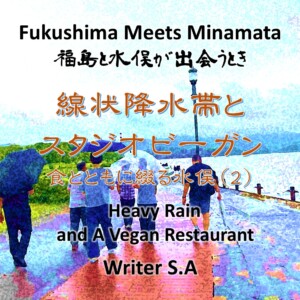
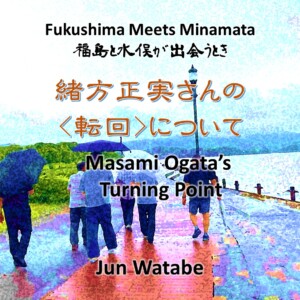
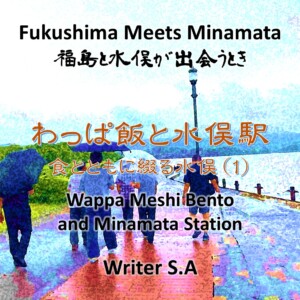

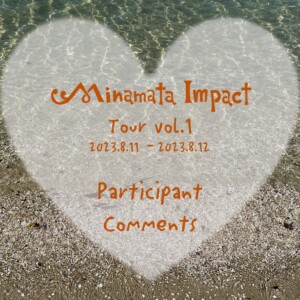
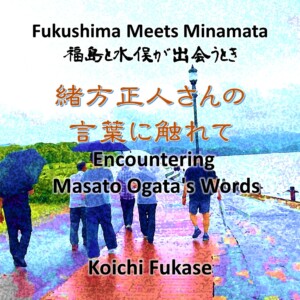
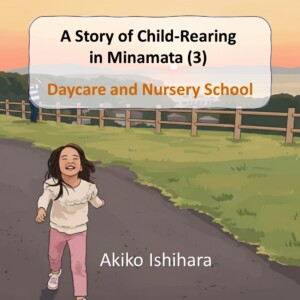
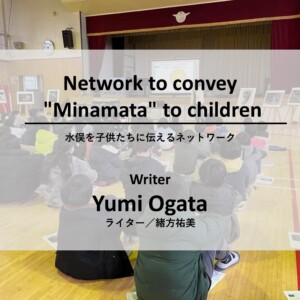
この記事へのコメントはありません。